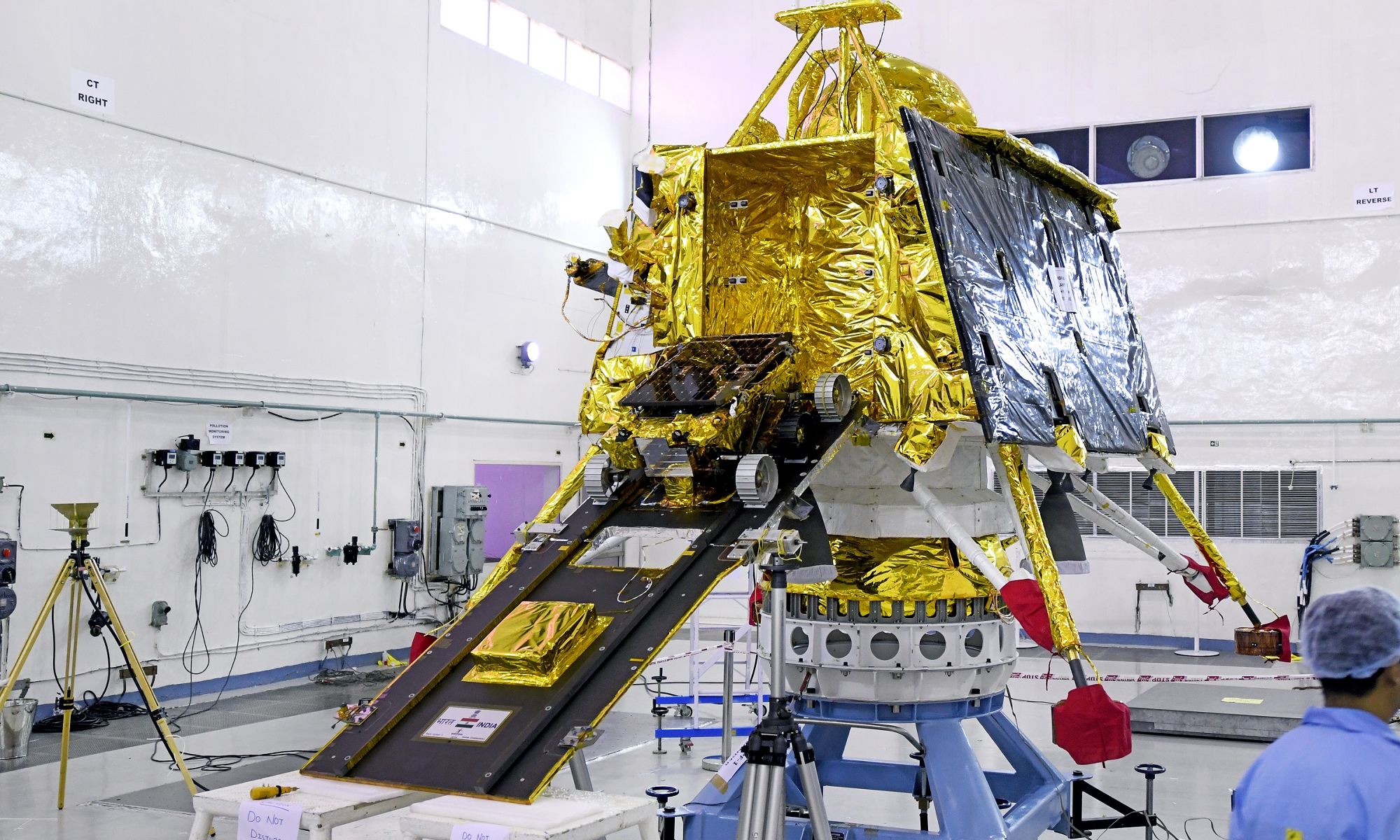On Sunday (Sept. 8th), the Indian Space Research Organization (ISRO) announced that they had located Vikram, the lander element of their Chandrayaan-2 mission. The search began almost immediately after the space agency lost contact with the robotic spacecraft, which occurred moments before it set down on the lunar surface (on Friday, Sept. 6th).
The location of the lander was confirmed by the Chandrayaan-2 orbiter, which managed to spot the lander using its high-resolution thermal camera. However, the ISRO has not re-established communications with the lander yet, which means that they are uncertain of whether or not the
Said Kailasavadivoo Sivan, the chairperson of the Indian Space Research Organization (ISRO), in a statement to Asian News International (ANI):
“We have the location of the Lander Vikram on [the] lunar surface and [the] orbiter has clicked a thermal image of [the] Lander. We are trying to establish contact. It will be communicating soon.”
He also added that it was “premature to say anything” for certain. This statement was echoed by an official update posted on the ISRO’s Chandrayaan-2 mission page:
“Vikram lander has been located by the orbiter of Chandrayaan-2, but no communication with it yet. All possible efforts are being made to establish communication with
Indications that there might be a problem with the landing began once Vikram reached an altitude of 2.1 km (1.3 mi) from the lunar surface. At this point, the lander began to deviate from its intended trajectory, which was followed by a loss of communications just as mission controllers expected to receive touchdown confirmation.
The ISRO’s Mission Control Center in Bengaluru, India, immediately indicated that they would be analyzing data from the orbiter to determine what happened. Naturally, there were many concerns that Vikram had failed to make a soft landing on the surface and actually crashed. As of this past weekend, the ISRO confirmed that this was likely to be the case.
“Yes, we have located the lander on the lunar surface,” said Sivan to the Times of India. “It must have been a hard landing.”
Attempts to restore communications are ongoing, but the ISRO is likely to cease these efforts by Sept. 21st, which is when the lander was originally expected to operate until. Mission planners intended for the lander to set down in the southern polar region, deploy the Pragryan rover, and remain operational for a single lunar day (the equivalent of about 14 Earth days).
At this point, many have their fingers crossed that the ISRO will be able to snatch success from the jaws of failure. If contact can be re-established, India will be the fourth nation in the world to land an exploration craft on the Moon (though the qualifier that it was a “soft landing” will have to be dropped).
However, even if contact cannot be restored with the lander, the mission is hardly a write-off. The Chandrayaan-2 orbiter is still operational and will remain in orbit around the Moon for the next seven years. Carrying on in the tradition of its predecessor, it will study the lunar surface using its suite of eight scientific instruments and the data will inform future ISRO missions.
India remains a growing power in space, and setbacks are an unfortunate but inevitable part of the process of space exploration.
Further Reading: ANI, Times of India

